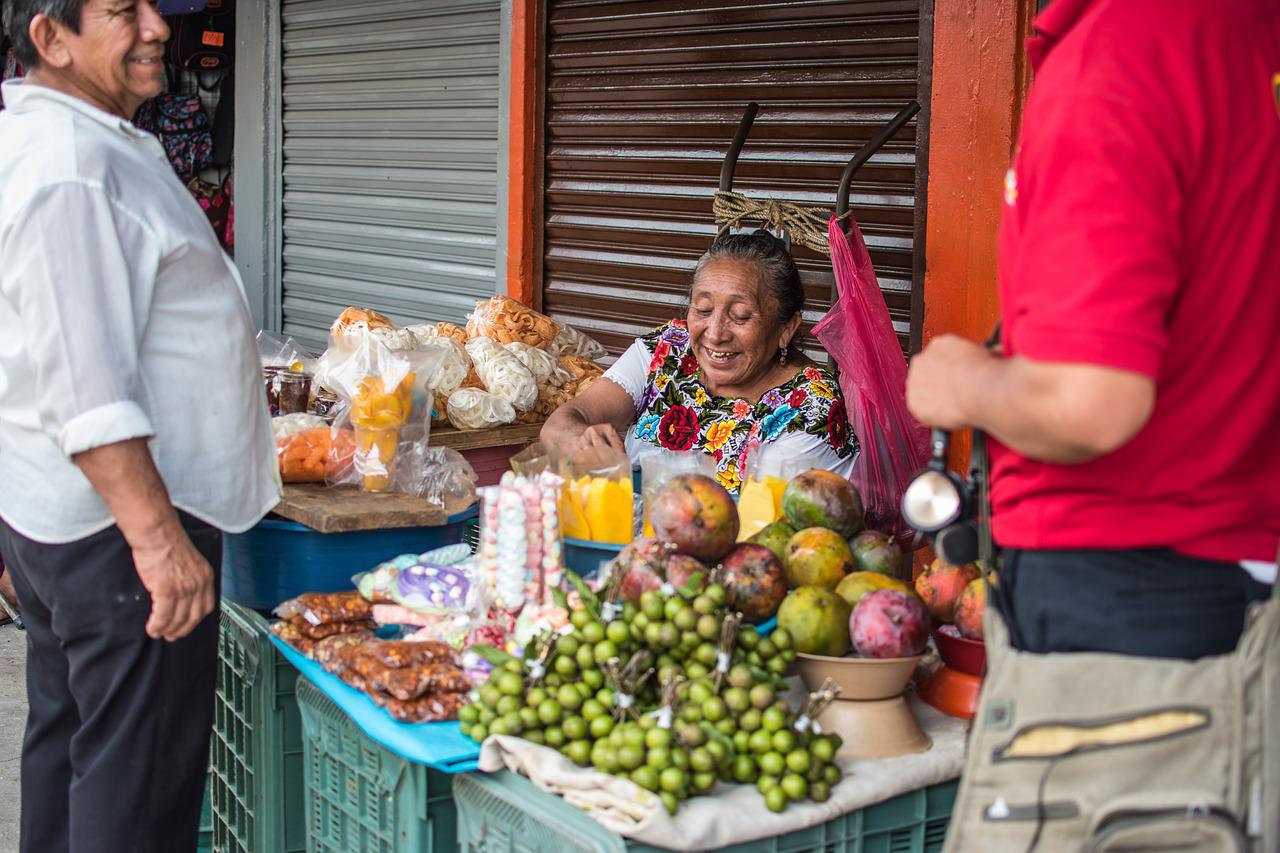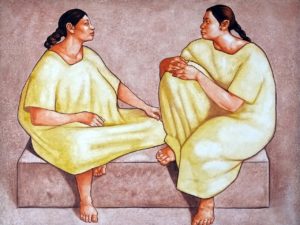Image by Marc Tran from Pixabay
In this post we’ll look at Spanish question words and how to use them.
Sí, No: Yes, No
Let’s start with some general vocabulary and expressions related to questions: una pregunta a question; sí yes; no no; quizá/quizás maybe; o or.
- Tengo una pregunta.
I have a question. - ¿Te puedo hacer una pregunta? (informal, for tú)
¿Le puedo hacer una pregunta? (formal, for usted)
Can I ask you a question? - No (lo) sé.
I don’t know. - No estoy seguro/segura.
I’m not sure.
- Estoy seguro/segura.
I am sure. - ¿Esto es té o café?
Is this tea or coffee? - ¿Quieres agua o jugo? (tú)
¿Quiere agua o jugo? (usted)
Do you want water or juice? - ¿Es este tu (su) hotel?
Is this your hotel? - Sí, es mi hotel.
Yes, it’s my hotel. - No, no es mi hotel.
No, it’s not my hotel.
GRAMMAR TIP! Remember that there are two ways of addressing a person as you in Spanish. Tú is informal, used among friends, family, younger people who are the same age, and anyone who you have a close relationship with. Usted is formal, used with older people, strangers, bosses, teachers, and anyone to whom you want to show respect. Your choice of pronoun (tú/usted, te/Le, tu/su, etc.) and verb (eres/es, vas/va, etc.) depends on whether you’re talking to a tú or an usted.
¿Qué? What?
To ask what, use ¿Qué?
- ¿Qué es esto?
What is this? - ¿Qué estás haciendo? (tú)
¿Qué está haciendo? (usted)
What are you doing?
GRAMMAR TIP! You’ll see that all of the Spanish question words have accents when they’re written: qué, quién, cuándo, cúanto, cómo, and so on. Some of these words, though, can also function as conjunctions or adverbs, and in these cases, the accent isn’t written. For example:
- ¿Qué está comiendo?
What is he eating? (qué is an interrogative, a question word in a direct question.) - Sé qué está comiendo.
I know what he’s eating. (qué is an interrogative, a question word in an indirect question) - Sé que está comiendo.
I know that he’s eating. (que is a conjunction)
If this is confusing, don’t worry! It never changes pronunciation, and frankly, a lot of native speakers of Spanish are unsure of when to drop the accent. But you may notice this in writing.
¿Quién? Who?
To ask who, use ¿Quién?
- ¿Quién es ese/esa?
Who is that? - ¿Con quién viajas?
¿Con quién viaja usted?
Who are you traveling with?
¿Dónde? Where?
To ask where, use ¿Dónde?
- ¿Dónde está el baño?
Where’s the bathroom? - ¿Dónde vives?/¿Dónde vive?
Where do you live? - ¿Adónde vas?
¿Adónde va?
Where are you going? - ¿De dónde eres?
¿De dónde es?
Where are you from?
GRAMMAR TIP! ¿Dónde? means where, usually in the sense of location. So it’s usually used with estar rather than ser. (For much more on ser and estar, check out this post.) If you want to ask where (to), use ¿adónde?, and for where (from), use ¿de dónde?
¿Cuándo? When?
To ask when, use ¿Cuándo? A related question is ¿A qué hora? at what time?
- ¿Cuándo llegas/sales?
¿Cuándo llega/sale?
When do you arrive/leave? - ¿Cuándo te vas?
¿Cuándo se va?
When are you going? - ¿A qué hora sale/llega el tren?
(At) What time does the train leave/arrive? - ¿A qué hora abre/cierra la tienda?
(At) What time does the store open/close? - ¿A qué hora empieza la película?
(At) What time does the film start?
¿Cómo? How?
To ask how, use ¿Cómo?
- ¿Cómo se dice <hello> en español?
How do you say <hello> in Spanish? - ¿Cómo vas al trabajo?
¿Cómo va al trabajo? (usted)
How do you go to work? - ¿Cómo es?
What does he/she look like? - ¿Cómo te llamas?
¿Cómo se llama?
What’s your name?
¿Cuánto? How much?
To ask how much, use ¿Cuánto? or ¿Cuánta? The first is for masculine nouns, and the second is for feminine nouns. To ask how many, use the plural forms ¿Cuántos?/¿Cuántas?
- ¿Cuánto cuesta esto?
How much does this cost? - ¿Cuántas personas?
How many people? - ¿Cuánto tiempo nos queda?
How much time do we have left? - ¿Cuánta leche quieres?
How much milk do you want?
GRAMMAR TIP! ¿Cuánto? is an adjective, so it has the four regular forms you’d expect of Spanish adjectives:
- ¿cuánto? (masculine singular)
¿cuánto tiempo? (how much time?) ¿cuánto dinero? (how much money?) - ¿cuánta? (feminine singular)
¿cuánta leche? (how much milk?) ¿cuánta agua? (how much water?) - ¿cuántos? (masculine plural)
¿cuántos hombres? (how many men?) ¿cuántos pesos? (how much pesos?) - ¿cuántas? (feminine plural)
¿cuántas veces? (how many times?) ¿cuántas mujeres? (how many women?)
¿Por qué? Why?
To ask why, use ¿Por qué?
- ¿Por qué estás aquí?
Why are you here? - ¿Por qué está triste?
Why is he/she sad? - Está triste porque está lloviendo.
He/She is sad because it’s raining.
Learn Spanish with the Language Garage!
Interested in more Spanish? Check out our other posts on Spanish language, culture, and more. If you’re looking for convenient and affordable live Spanish lessons with a real teacher, visit The Language Garage. Our lessons are affordable and fun, and they’re given online in a virtual classroom, so it doesn’t matter where you live or work – we can come to you. We have flexible options, with a free trial so that you can decide if there’s a fit. Check us out!





